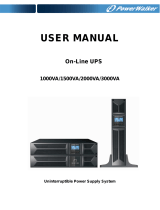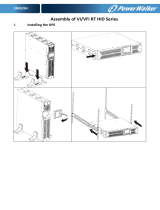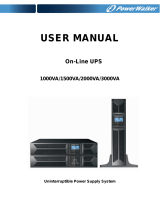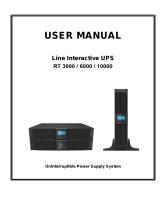
VI
©2018 Cyber Power Systems (USA), Inc. All rights reserved. All other trademarks are the property of their respective owners.
TABLE OF CONTENTS
SAFETY INSTRUCTIONS.................................................................................................................................II
Special Symbols............................................................................................................................................................................II
Personal Safety............................................................................................................................................................................III
Product Safety ............................................................................................................................................................................IV
INTRODUCTION..............................................................................................................................................1
Smart App Online UPS Systems................................................................................................................................................1
UPS Extended Battery Modules................................................................................................................................................1
Step-Down Transformer..............................................................................................................................................................1
Unpacking Procedures...............................................................................................................................................................2
Whats In The Box.........................................................................................................................................................................3
OVERVIEW..........................................................................................................................................4
Power Module...............................................................................................................................................................................4
INSTALLING YOUR UPS SYSTEM....................................................................................................................6
System Block Diagram...............................................................................................................................................................6
Hardware Installation Guide......................................................................................................................................................6
HARDWARE INSTALLATION ..........................................................................................................................8
Rackmount Installation ..............................................................................................................................................................8
Vertical/Tower Installation........................................................................................................................................................10
ELECTRICAL INSTALLATION........................................................................................................................11
Input/Output Configuration....................................................................................................................................................11
Backfeed Protection Operation..............................................................................................................................................12
Without Backfeed Protection Configuration......................................................................................................................13
With Backfeed Protection Configuration.............................................................................................................................14
EXTENDED BATTERY MODULE INSTALLATION...........................................................................................14
Rear Panel Description..............................................................................................................................................................14
Connection With Power Module...........................................................................................................................................14
OPTIONAL LCD CONTROL PANEL INSTALLATION......................................................................................17
Remote Control...........................................................................................................................................................................17
Wall-mounting Instructions......................................................................................................................................................17
UPS SYSTEM STARTUP..................................................................................................................................18
USING THE UPS SYSTEM..............................................................................................................................19
LCD Module................................................................................................................................................................................19
LCD Menu Tree............................................................................................................................................................................20
MAINTENANCE.............................................................................................................................................29
Battery Replacement ................................................................................................................................................................30
TECHNICAL SPECIFICATIONS......................................................................................................................31
TROUBLESHOOTING...........................................................................................................................................34
PRODUCT REGISTRATION...........................................................................................................................35
LIMITED WARRANTY AND CONNECTED EQUIPMENT GUARANTEE..........................................................36
CONFORMANCE APPROVAL........................................................................................................................40























